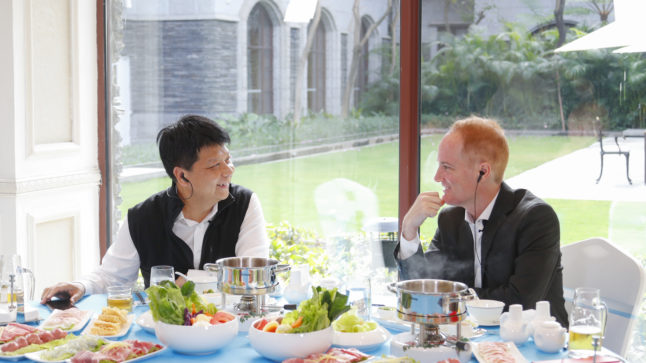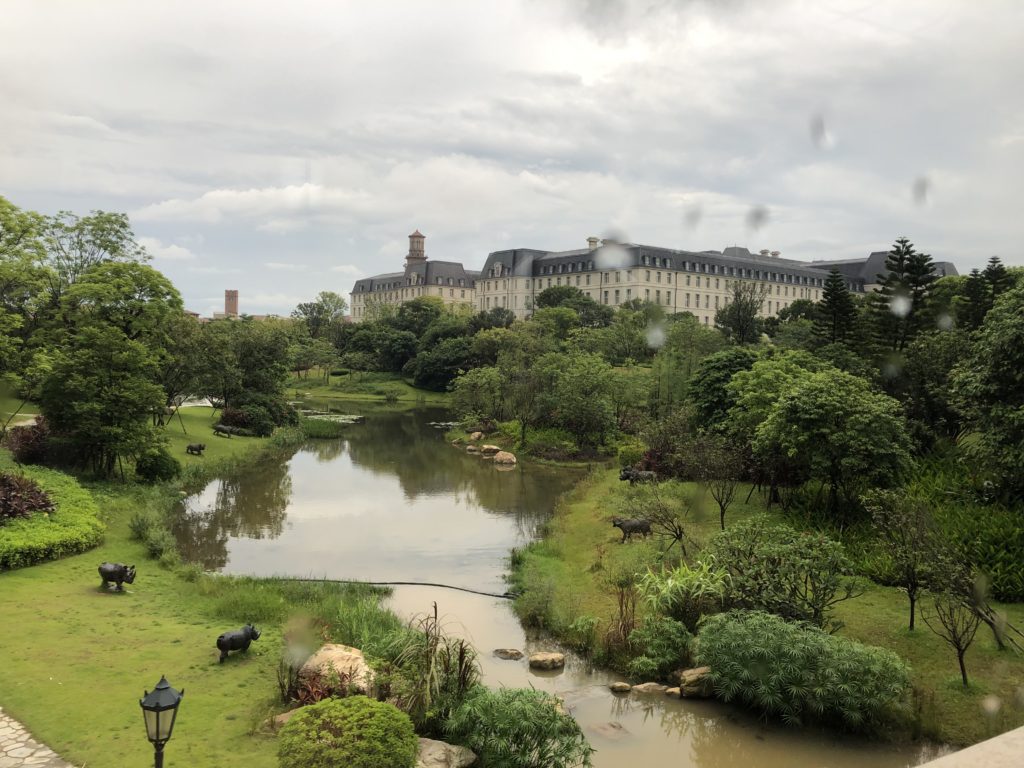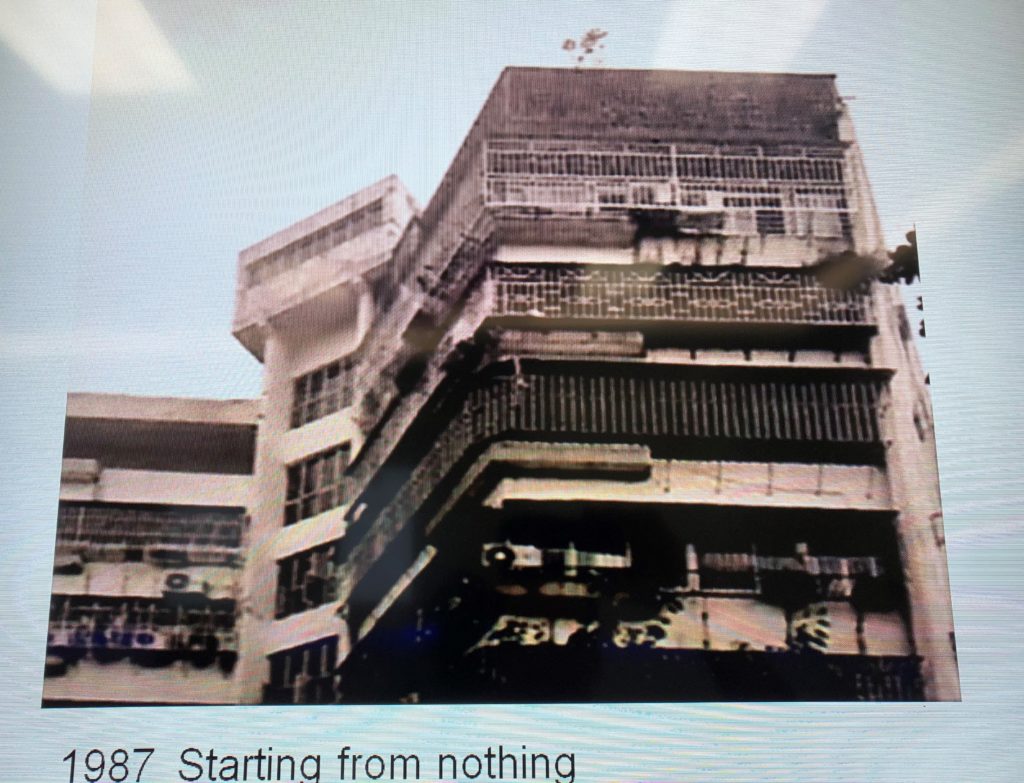In 2020, I traveled to Shenzhen to interview Huawei rotating Chairman Guo Ping. Not only was he one of the key decision-makers for the company, but he was also Huawei’s 5th employee. So I thought he would be the perfect person to ask both about Huawei’s early days and the most important business questions going forward. And it turns out these two things are closely related.
A couple disclaimers.
- First, I did not work for nor have any financial relationships with Huawei for this interview.
- Second, I do not write about political stuff. I stick to business questions, specifically the intersection of competition and digital. So if you’re looking for political stuff and US-China stuff in this article, you are going to be disappointed.
Ok. Back to my interview with Mr. Guo.
On a random impulse, I threw out the idea that we should just skip the typical board room or conference for the interview. We should do it over hotpot and beer. Board rooms and studios are so boring. And Chinese hotpot is fantastic. So I proposed we eat and have a drink at his favorite local restaurant. And chat about telecommunications, the early days of Huawei, business and life.
And, surprisingly, word came back almost immediately that Mr. Guo liked the idea. I’m guessing he is also maybe a bit bored with the same mostly political questions and formal stuff. But they did nix the idea of going out. Instead it was hotpot on campus.
It turned out to be fascinating discussion, with some really good food. Which then led to a hike in the Shenzhen mountains with the Huawei team. More on that below.
But first, my experience and main take-aways.
I Really Like Shenzhen and China’s Greater Bay Area
There aren’t that many tech cities that are also green and tropical. I’m not sure why. Silicon Valley is dry. London is grey. Beijing is cold. Boston is awful.
But Shenzhen is warm and tropical – and it has Tencent, DJI, Foxconn, Huawei, and quite a few other cool companies. There are even a few nice beaches. Shenzhen basically has all three of my interests in life: tech companies, a tropical climate and ice coffee.
And the whole the Greater Bay Area (GBA) initiative is getting really interesting. It has Macau and Zhuhai (just about my favorite Chinese city) to the West of the Bay. And it stretches around to Guangzhou, Shenzhen and Dongguan. The whole region is becoming an integrated economic powerhouse. If it had a less boring name, people would be paying a lot more attention to it. Here is some good background info on GBA.
The main Huawei campus is in the Longgang district of Shenzhen, which is a bit north of downtown. The headquarters is both odd and kind of great. You can read a basic description here. But what really jumps out at you (and what people always comment on) is the European and sometimes Russian(?) architecture and art.
Founder Ren Zhengfei just really likes European architecture so there are Greek(?) and Roman(?) statues everywhere. And there are vaulted ceilings and French furniture like in the Palace of Versailles. There are also French-style villas, lakes, geese and grass lawns. And all of this is stuck in the middle of a dense Chinese city. It should be cheesy (like Disneyland), but it works and it’s actually really nice.
Huawei has recently built a much bigger version of this at their new “Europe town” R&D center in Dongguan. It’s basically 6-7 town squares, each modeled after a European town (Prague, Vienna, etc.). And they are all sort of smashed together and then connected by rivers, lawns and a cute little train. Again, it sounds kind of odd but it’s actually really nice.
So I was basically in a great mood as I arrived in Shenzhen. And shortly after, I was sitting with my ice coffee amid French furniture and statues, waiting to interview the rotating Chairman of Huawei over hotpot.
Some days my life is really weird.
An Introduction to Huawei Rotating Chairman Guo Ping – Tech Exec and Persistent Hike Inviter.
I met up with Mr. Guo outside the executive offices at the HQ. These offices are in a French-style building that sits on a lake. We chatted briefly by the lake and then went to do the interview over lunch.
First impressions:
- Chatting with tech executives over hotpot and beer is like my best idea ever. I should do this every week.
- However, only the interviewer (me) gets to do lots of eating and drinking. The interviewee (Mr. Guo) mostly talks and doesn’t get to eat that much. I’ll have to improve this.
- It turns out Mr. Guo is a really sociable guy. He’s engaging and fun to talk with. Plus, he’s funny.
I suspect I just became the first person to say a Huawei senior executive is funny. Isn’t that conspicuous given all the their media coverage?
When people talk about Apple, they think of Tim Cook. When people think of Microsoft, they think of Satya Nadella. But when people think of Huawei, they think of an amorphous “Chinese” company. Most people don’t know the names of the management (Liang Hua, Guo Ping, Eric Xu, Ken Hu). And they really don’t know much, if anything, about these individuals.
I think that is not a small part of what has been going on. Huawei, ByteDance and some other Chinese companies have moved into the spotlight but they are still viewed almost entirely in vague terms and generalizations. Or as symbols of political issues.
But business executives spend their days doing business. Doing technology and building projects. They are not political actors. Knowing the personalities of tech executives is important. And you really want to think about these things on three levels – the bigger industry issues, the company, and the management.
And on a personal level, Guo Ping is a fun guy. Some people are just fun to have a beer with. And he definitely is. I later got to see him with Huawei staff and with some of his family. And he was chatting up and introducing everyone. He was clearly in his element.
It also turns out he’s a bit of an exercise fanatic. He had some health issues several years prior and says he is focused on staying in shape. He mentioned he ran a half-marathon recently and then he invited me to go on a hike with him. I sort of deflected, citing my flights. He said flights could be changed. I evaded again, saying I would have to check. He ignored that second evasion as well. Long story short, he blasted through my evasions and I ended up changing my flights, staying in Shenzhen and going on the hike with him and Huawei team that weekend.
And to his credit, the hike was awesome. We went up into the Shenzhen mountains with the Huawei team and it was great. Although, he didn’t mention it was a 8-10 hour hike. And I did end up getting lost with a Huawei handler.
Ok. On to the early days of Huawei.
Huawei’s Struggle to Survive as a Tiny Company in a Tough Business
As mentioned, Guo Ping was the 5th employee of Huawei, having joined in 1988. And we talked quite a bit about these early days. And about how he went from an ordinary employee installing and maintaining equipment to head of R&D. And later to head of consumer devices. And eventually to rotating CEO and Chairman.
Mr. Guo grew up in the south of Jiangxi province in Eastern China. His father worked in a bank and his mother as a teacher. He studied computer science at Huazhong University of Science and Technology, located in Wuhan in neighboring Hubei province. And this resulted in him being in the Wuhan area in the mid-1980’s, as China began to modernize and private sector career opportunities began to emerge.
Keep in mind, prior to this there weren’t that many career options in China. There was virtually no private enterprise. You could work in a State company. You could teach or do research at a government group. You could be in the military. It was only in the mid 1980’s that professionals (young and old) were suddenly confronted with the idea of working in “private enterprise”. And most didn’t really know what that even meant.
The epicenter of 1980’s China was Shenzhen. It was a boom town where China was beginning to connect with the world and all its products and technologies. If you look at many of the first wave of China’s big companies (Huawei, Vanke, etc.), they were founded by entrepreneurs who were in Shenzhen at this time. Vanke founder Wang Shi was reported to have been the biggest trader in Shenzhen in this period, prior to going into residential real estate. Ren Zhengfei founded Huawei in Shenzhen around the same time.
Guo Ping left Wuhan and moved to Shenzhen during this time. And this is really the move that changed the trajectory of his life. He said his goal was to work at Shenzhen University. But (from my understanding) he had difficulty getting the necessary hukou to do this (you need a local registration to work in other provinces). He ended up meeting Ren Zhengfei and became the 5th employee of Huawei. An early office is shown below.
I’ve written a lot about Huawei’s culture (Huawei is Going to Beat Trump with Human Resources, Not Tech). And about how the company historically has not focused on profits. Let alone on cashing out with an IPO or other exit event.
According to Mr. Ren’s writings going back 30 years, the company was focused from the beginning on survival. This focus on long-term survival is something quite rare in technology companies. They are after growth. Or an IPO. But survival has been and remains the primary challenge for the company. Ren Zhengfei has described early Huawei as being a flickering candle in the wind, just trying to stay lit.
Huawei was a very small telecommunications equipment company facing off against huge foreign competitors, in a particularly difficult and not terribly profitable business. Mr. Ren has joked that they went into telecommunications equipment mostly because they didn’t know how hard the business actually was.
In these first years, Huawei had one contract with a Hong Kong company to import PBX devices. These are the switches that let you turn one phone line (say to a hotel) into many (a phone in each room). And the company’s few employees went around China selling and installing these devices, mostly to small companies like offices and hotels. And mostly in second and third tier cities. Basically, competing with telecommunications giants like Ericsson, Alcatel and Nokia was impossible. So it was about being scrappy and going after smaller, fringe markets. You have to avoid the big competitors. And go where they don’t.
Mr. Guo, with his computer science degree from Wuhan, was covering Zhejiang. And from his comments it sounds like he was basically doing everything. From installing and maintaining equipment for clients to solving bigger problems. And he basically had to learn about routers, telco equipment and installation as he went. He did mention that one of his biggest wins back then was the signing a 300-bed local hospital.
As Mr. Guo was talking (and I was eating), it really did strike me how improbable it was for early Huawei to have survived, let alone thrived. It was a tiny company compared to its competitors. It didn’t have scale, funding or technology. And while there was tons of growth and pent up demand in China back then, it was still a horrendous competitive situation. The only strategy was to:
- Go after the opportunities your larger competitors didn’t want (they would be impossible to beat).
- To give clients whatever they wanted, no matter what.
- And to work harder than everyone else.
That still sounds a lot like Huawei today. The company is famous for its work ethic. For going anywhere in the world. For meeting any client request. And for basically doing what their competitors can’t or won’t.
Guo Ping mentioned that it was also during this early period that the employee share ownership program (ESOP) was launched. I have pointed to the ESOP as a key part of Huawei’s culture and HR system (which I call “meritocracy plus partnership“). So I was a bit surprised when Mr. Guo said this program was initially created because they couldn’t afford to pay their employees more. They didn’t have that much cash so they started offering shares instead. In 2018, 96,768 employees participated in Huawei’s ESOP.
Huawei’s First Tech Ban
It was also during these early days that Huawei had its one importation contract canceled. Mr. Guo said this contract for PBX machines was basically their entire business. And then it was suddenly cut off. This was thirty years before President Trump did a similar tech ban for Huawei in 2019.
So, out of necessity, Huawei began to build their own PBX machines. And Mr. Guo became R&D Project Manager. He had some interesting comments about how much failure there was in product development. How many (most?) of their early products failed because they didn’t work technologically. Or because they didn’t succeed in the market. Today, Huawei is the industry leader when it comes to R&D in telecommunications, spending over $15B per year. And the Europe Town I mentioned is entirely dedicated to research and development. But this began as a lot of trial and error by a small team.
It was also during this early period that the company began to systematically deploy money into R&D every year. It’s important in terms of competition. It was a strategic move. And it also keeps the company from being too dependent on anyone for products.
Interestingly, it was also during this period that HiSilicon, their fabless semiconductor company, was launched. Founded in 1991 as a design center, it became a wholly owned subsidiary of Huawei in 2004. The thinking was that Huawei should not be dependent on other companies for semiconductors. And this turned out to be fortuitous as today HiSilicon is one of the Chinese leaders in semiconductors. When digital China talks about ending their dependence on US semiconductors, a lot of people are looking at HiSilicon.
***
Overall, I think it is fascinating how much the early years seem relevant to the current situation.
- Rotating Chairman Eric Xu has said that Huawei’s #1 priority is now “survival”.
- Huawei is facing a second tech ban, particularly in Android and semiconductors.
- Huawei is still systematically putting 15% of its revenue into R&D.
That’s it. It was a great interview. I hope this is helpful.
Thanks for reading, – Jeff
———-
I am a consultant and keynote speaker on how to accelerate growth with improving customer experiences (CX) and digital moats.
I am a partner at TechMoat Consulting, a consulting firm specialized in how to increase growth with improved customer experiences (CX), personalization and other types of customer value. Get in touch here.
I am also author of the Moats and Marathons book series, a framework for building and measuring competitive advantages in digital businesses.



